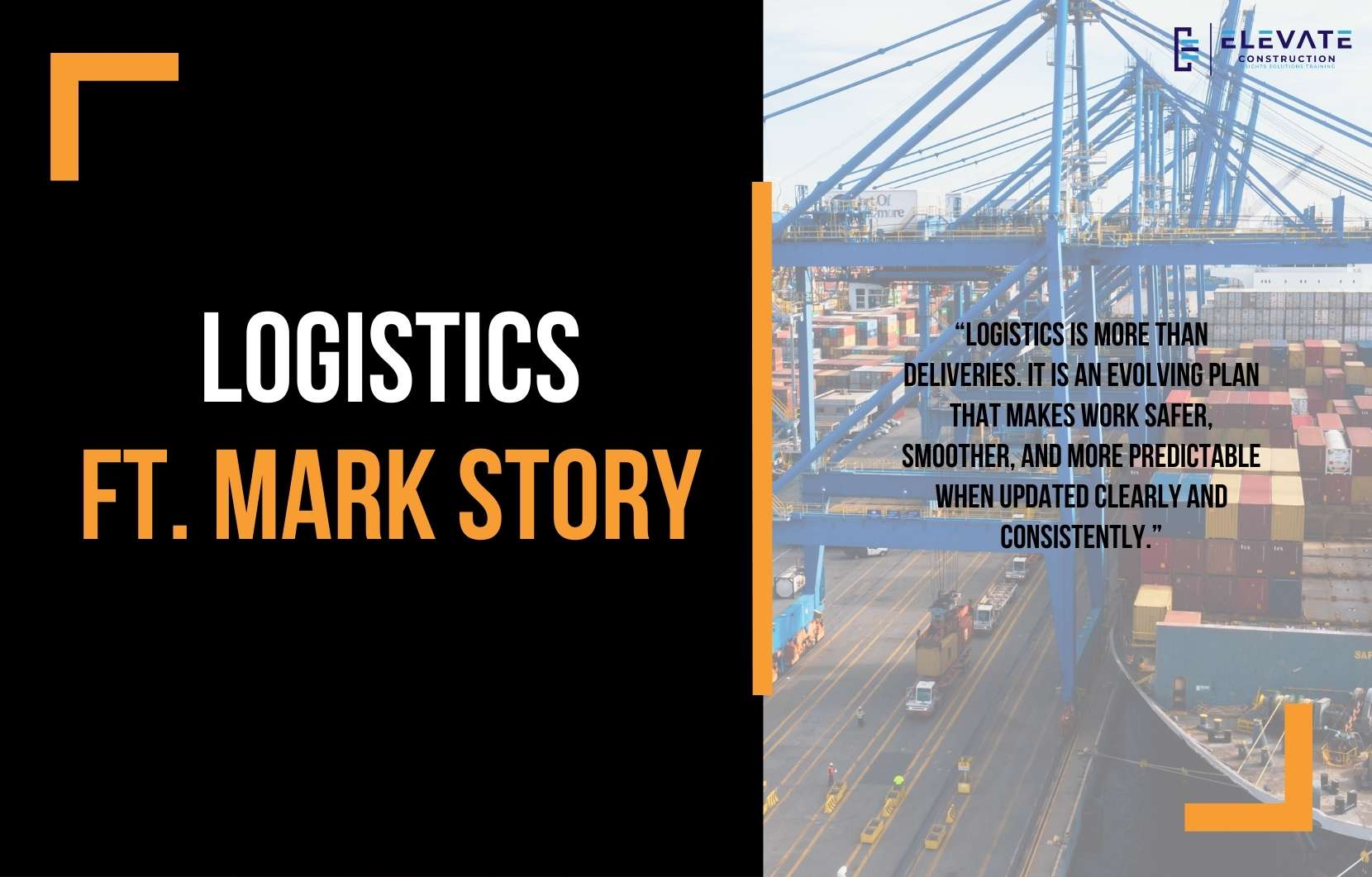The Power of Logistics in Construction
Logistics is one of the most underestimated yet vital aspects of construction. Many people think logistics simply means managing deliveries, but in reality it touches every part of the project from planning temporary roads to creating safe walkways for hundreds of workers. Done well, logistics enables smooth production. Done poorly, it creates constant chaos.
Mark Story and I discussed how logistics must scale with the size of the project but never remain stagnant. A logistics plan created on day one cannot simply stay in place for eighteen months. As construction progresses from excavation to concrete to finishes, the plan has to evolve. This includes fences, lay down yards, haul routes, and even restrooms and break areas. Everything should adapt to meet the project’s current phase.
Mark shared an example from his experience at Berkeley Law School. Early on, a lane of parking and sidewalk became the laydown yard and access point for cranes and pump trucks. As the project advanced and site conditions shifted, the team had to purchase parking on the opposite side of the street and secure permits for lane closures. Without those adjustments, buses and traffic would have collided with pump trucks and cranes. That is the reality of logistics planning, it is about anticipating change before it creates accidents and delays.
A strong logistics plan is also about clarity and communication. When the plan is updated consistently and presented visually, it allows everyone from workers to truck drivers to know exactly where to go. Inconsistent or cluttered plans create confusion, so breaking information into multiple, simpler maps, one for deliveries, another for walkways and restrooms, makes it easier for people to follow. Multilingual signage and straightforward directions are equally important so that everyone on the site can understand them.
One of the biggest mistakes in logistics is treating it as only the receipt of deliveries. True logistics covers two stages. The first is receiving materials from the truck at the jobsite. The second is moving those materials safely and efficiently to the work zones where trades can use them. Both stages require clear coordination. A procurement log may track when materials arrive, but the logistics plan ensures that cranes, forklifts, and hoists are in place to move them to the right spot without wasted effort.
Mark emphasized how essential it is to make jobsites easy for truck drivers to navigate. Drivers often face unclear signage, closed lanes, or directions that conflict with GPS. Many of them arrive after being ignored or dismissed at multiple stops, only to be met with frustration on site. Instead, we should treat drivers as partners. Providing clear maps, designated queuing areas, and even QR codes with routes reduces confusion and builds goodwill. When drivers know exactly where to go and when they will be unloaded, they not only stay safe but also deliver materials on time, helping the project run smoothly.
Another key insight is the connection between logistics and customer experience. If deliveries are mishandled and end up at the wrong dock or blocking access for owners and visitors, it damages relationships and trust. Top executives should not have to call a superintendent about misplaced shipments. Respecting the customer means planning logistics to prevent disruptions long before they happen.
Planning itself is what ties all of this together. Planning is only necessary when multiple elements must intersect. Construction is built on these intersections, trades, deliveries, inspections, and sequences all colliding. That is why logistics cannot be improvised. Working backward from the end goal, such as commissioning a building, helps establish the right sequence for steel, concrete, and site work. Logistics is about anticipating those intersections so the project can flow.
Ultimately, logistics planning is about making life easier for everyone on the project. Workers need safe walkways. Truck drivers need clear instructions. Trades need flat, powered, and organized laydown areas where prefabrication can occur. Owners need their campuses and roads accessible. The best logistics plans consider all of these needs, remain flexible, and are updated regularly.
By giving logistics the attention it deserves, we transform it from a source of daily firefighting into a powerful enabler of productivity and safety. Planning with the end in mind ensures that deliveries, equipment, and people arrive exactly where they need to be at the right time. That is what allows great projects to succeed.
On we go,
Key Takeaway
Logistics is more than deliveries. It is an evolving plan that makes work safer, smoother, and more predictable when updated clearly and consistently.
If you want to learn more we have:
-Takt Virtual Training: (Click here)
-Check out our YouTube channel for more info: (Click here)
-Listen to the Elevate Construction podcast: (Click here)
-Check out our training programs and certifications: (Click here)
-The Takt Book: (Click here)
Discover Jason’s Expertise:
Meet Jason Schroeder, the driving force behind Elevate Construction IST. As the company’s owner and principal consultant, he’s dedicated to taking construction to new heights. With a wealth of industry experience, he’s crafted the Field Engineer Boot Camp and Superintendent Boot Camp – intensive training programs engineered to cultivate top-tier leaders capable of steering their teams towards success. Jason’s vision? To expand his training initiatives across the nation, empowering construction firms to soar to unprecedented levels of excellence.
On we go

